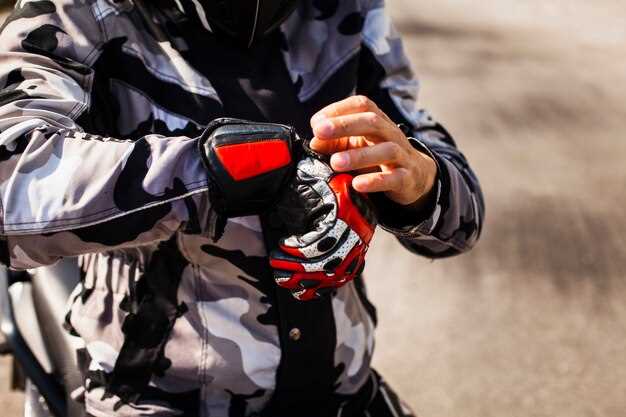
In the high-octane world of motorcycle racing, the right gear can be the difference between a thrilling victory and a serious accident. The demand for top-quality racing leathers and protective equipment has never been higher, as riders strive to optimize both speed and safety on the track. Comprehensive knowledge about the best gear not only enhances performance but also provides vital protection against the inevitable risks associated with racing.
Choosing the best racing leathers involves understanding materials, construction, and safety features. Leather is renowned for its durability and abrasion resistance, making it the preferred fabric for racers. Modern innovations have introduced a range of synthetic materials that offer similar or superior protective qualities, allowing riders to select gear that meets their specific needs in terms of weight, flexibility, and breathability.
Aside from leathers, essential gear such as helmets, gloves, and boots play critical roles in rider safety. Each piece of equipment should be designed to withstand the forces encountered during a race, offering features such as impact resistance, shock absorption, and excellent grip. Understanding the standards and certifications that govern safety gear is crucial for making informed decisions that prioritize personal safety on the track.
This article delves into a curated selection of the best racing leathers and gear available today, highlighting their features, benefits, and what to consider when making a purchase. Whether you are a seasoned racer or a newcomer to the sport, investing in top-notch equipment is essential for experiencing the thrill of speed without compromising safety.
Choosing the Right Leather Suit for Optimal Protection During Races

Selecting the appropriate leather suit is fundamental for ensuring safety and performance on the track. A well-designed suit provides not only protection but also enhances mobility and comfort.
First, consider the fit of the leather suit. It should be snug yet allow for movement. The suit must cover your entire body without being overly loose, as excess fabric can flap during high speeds, increasing the risk of injury. Look for suits that incorporate stretch panels or strategically placed zippers for improved flexibility.
Second, prioritize the quality of the leather used. Cowhide is the most common choice due to its durability and excellent abrasion resistance. However, kangaroo leather is lighter and offers higher strength-to-weight ratios, making it a popular choice among racers who prioritize speed. Ensure that the leather has been treated for weather resistance to provide additional protection during wet conditions.
Next, examine the construction of the suit. Double or triple stitching in critical areas enhances durability, while reinforced seams can help prevent tearing during an accident. Look for suits with external protection features, such as hard armor inserts at the shoulders, elbows, knees, and back, as these provide crucial impact resistance.
Ventilation is also an important factor. Many racing suits come with perforated panels that allow for airflow, which helps to regulate body temperature during intense racing sessions. Adequate airflow reduces fatigue and maintains focus on the track.
Lastly, consider additional features such as knee sliders, which can enhance stability during cornering, and pockets for storing small items. Opt for designs with reflective elements for improved visibility in low-light conditions.
In summary, choosing the right leather suit involves evaluating fit, material quality, construction, ventilation, and additional features. Prioritize these aspects to ensure optimal protection and enhance your racing experience.
Essential Safety Accessories: Helmets, Gloves, and Boots for Racers
When it comes to racing, the right safety accessories are crucial for protecting a racer’s life and enhancing their performance on the track. Three essential items that every racer should invest in are helmets, gloves, and boots. Each of these accessories plays a unique role in ensuring safety and providing comfort during intense racing conditions.
Helmets are the most critical piece of racing gear. They serve as the first line of defense against head injuries in the event of a crash. Modern racing helmets are designed with advanced materials such as carbon fiber and fiberglass, offering a lightweight yet robust structure. It’s imperative that the helmet meets safety standards set by organizations such as Snell or DOT, ensuring it can withstand impact and provide adequate protection. Proper fit is also essential; a helmet that is too loose or too tight can compromise safety. Additionally, features like ventilation systems, sun visors, and communication setups enhance usability and comfort.
Racing gloves are another vital component of a racer’s gear. They provide grip on the steering wheel while protecting the hands from abrasion and heat. High-quality gloves are usually made from materials like Nomex, which is flame-resistant, ensuring safety from fire in case of an accident. When selecting gloves, look for a snug fit that allows for dexterity without compromising protection. Extra features like reinforced palms provide added durability, while gel padding can improve comfort during extended driving sessions.
Finally, racing boots are designed specifically to bridge the gap between comfort, protection, and control. These boots should be lightweight but sturdy enough to withstand the rigors of racing. They typically feature heat-resistant materials to protect against the extreme temperatures that can arise from proximity to hot components. A proper fit is crucial, as boots should allow for free movement of the ankles while providing enough support to prevent injury. Anti-slip soles and reinforced toe areas further enhance grip and protection, essential for maintaining control during high-speed maneuvers.
Investing in high-quality helmets, gloves, and boots not only enhances safety but also contributes to better performance and confidence on the track. Prioritizing these essential safety accessories can make all the difference for a racer, enabling them to focus entirely on the competition ahead.
Maximizing Aerodynamics with the Right Gear Setup for Enhanced Performance

To achieve optimal performance in racing, maximizing aerodynamics is essential. The right gear setup can significantly reduce drag and increase speed, allowing racers to navigate tracks more efficiently. Here are critical factors to consider for enhancing aerodynamics:
- Aerodynamic Suit Design:
- Select a racing suit made from lightweight, high-tech materials that hug the body closely.
- Look for suits with minimal seams and streamlined profiles to reduce air resistance.
- Consider suits with built-in aerodynamic features, such as winglets or textured surfaces, that can help manipulate airflow.
- Helmet Selection:
- Choose helmets that are specifically designed for racing, featuring aerodynamic shapes to minimize drag.
- Ensure that the visor is low-profile and can be closed securely for better airflow management.
- Consider using a full-face helmet for maximum protection and improved aerodynamic performance.
- Gloves and Boots:
- Opt for gloves that fit snugly without excess material to reduce wind resistance.
- Select racing boots designed for aerodynamic efficiency, which also allow for effective control of the vehicle.
- Body Positioning:
- Maintain a low profile on the bike to decrease drag, keeping your head and torso aligned.
- Adjust your arm and leg positions to create a compact silhouette while riding.
- Practice leaning into corners and tucking down during straightaways to optimize aerodynamics.
- Equipment Integration:
- Ensure that all gear components, such as knee sliders and back protectors, are designed with aerodynamics in mind.
- Use aerodynamic mirrors and tailpieces on your racing machine to reduce wind resistance.
By prioritizing aerodynamic features in your gear setup, you can enhance your racing performance and achieve greater speeds on the track. Every detail counts, from fabric choice to body position, resulting in a comprehensive approach to minimizing drag and maximizing effectiveness in competitive racing.